This project looked at how we might design a collaborative STEAM learning space that encourages confidence in group learning in new high school students with anxiety. Though the project was directly intended to target students aged 13-14 as core stakeholders, the project was expanded to look at the direct stakeholders who would be interacting with and being encouraged to purchase and utilise the pods in classroom settings. With this in mind, the final outcome was a STEAM Learning Pod.
The pod is designed to maximise use for different curriculum topics, including for experimentation or group work inside a classroom as well as promoting outdoor learning. For outdoor use, the pod includes wheels and is designed to be small enough to fit through a standard doorway, meaning that it can be easily transported to different areas. Should it be used outside, a covering and collapsable poles have also been included in the pod to set up above the station while students work outside.
This collaborative project held equal parts in the ideas behind the solution, but there was more involved in the additional activities involved, the research prior to the final solution and the earlier iterations of prototyping.
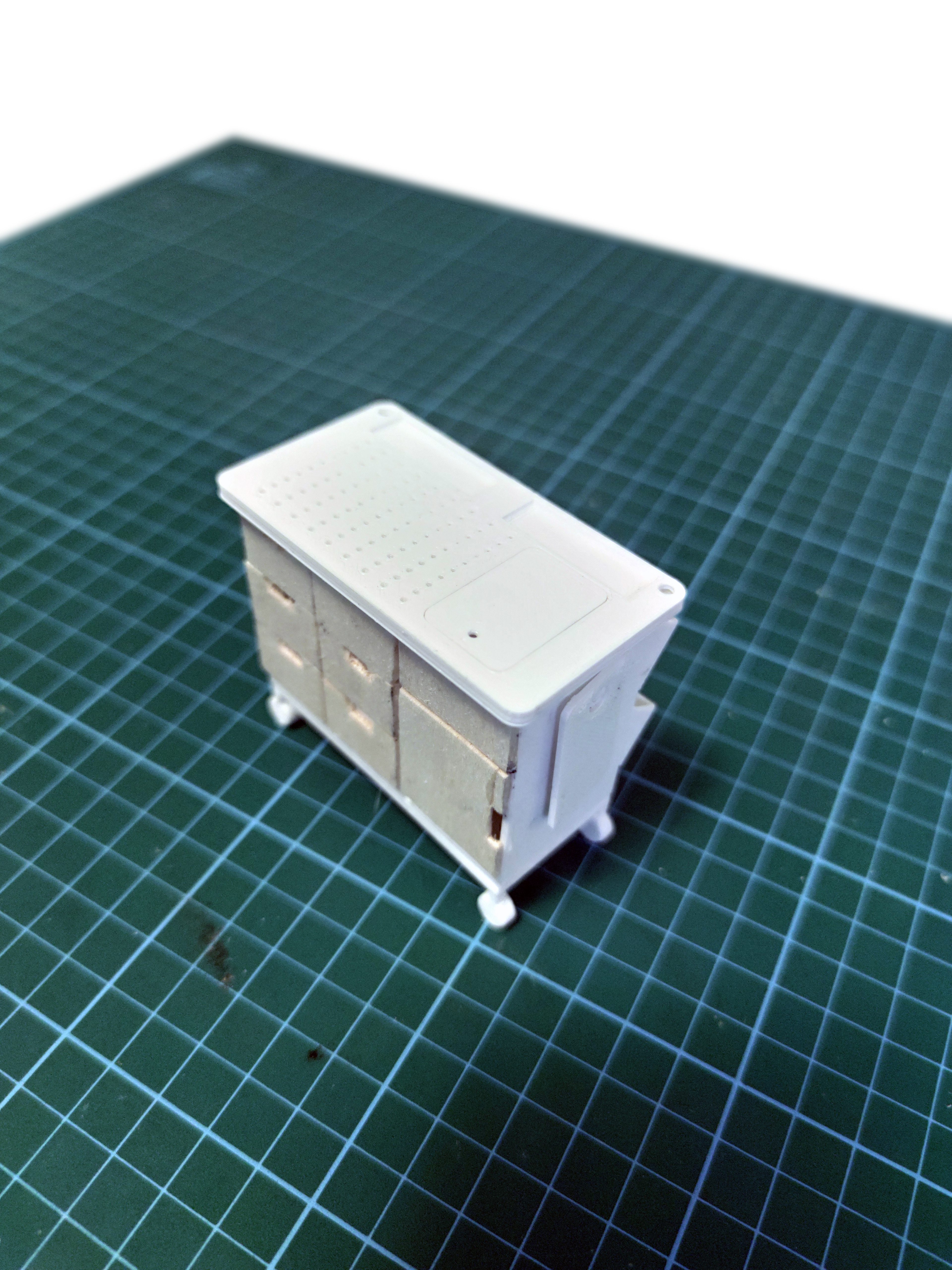
The STEAM Learning Pod
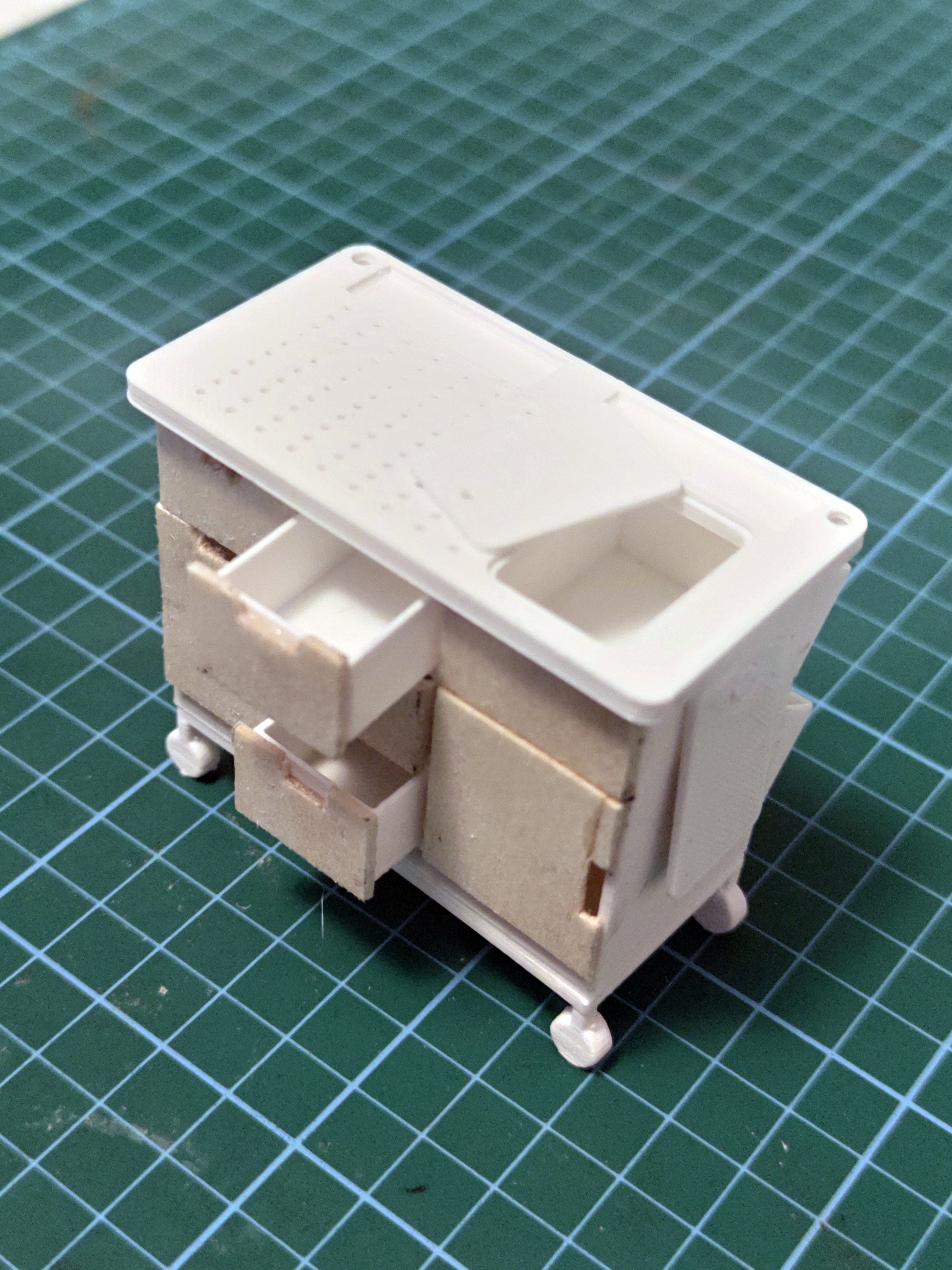
The STEAM Learning Pod, showing moveable drawers and hidden sink.

The STEAM Learning Pod, reverse veiw showing plant holders, open drawer, and hidden sink.
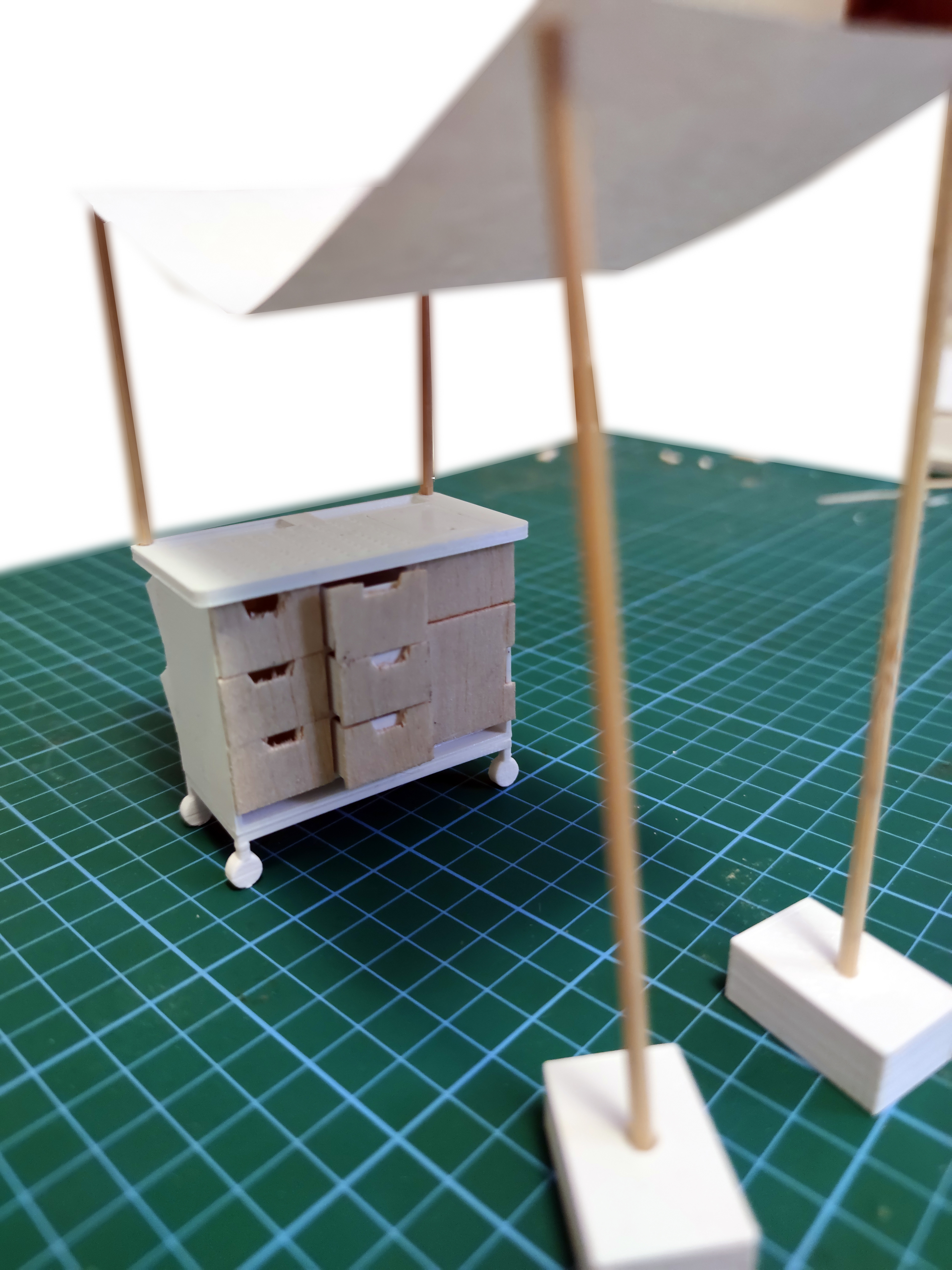
The STEAM Learning Pod, showing open drawers and outdoor context with portable tent covering.
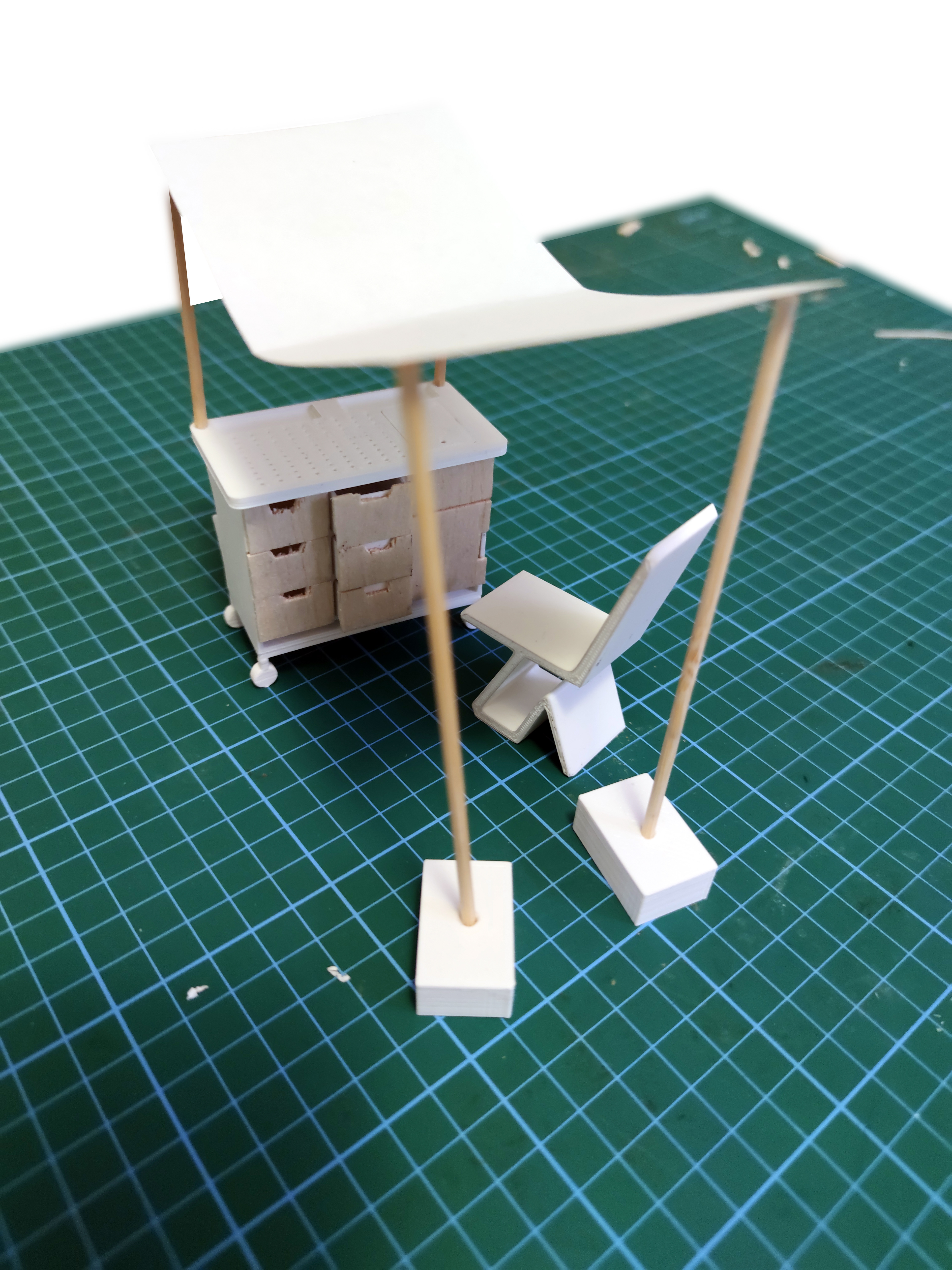
The STEAM Learning Pod, showing outdoor context with portable covering and ergonomic/foldable chair.
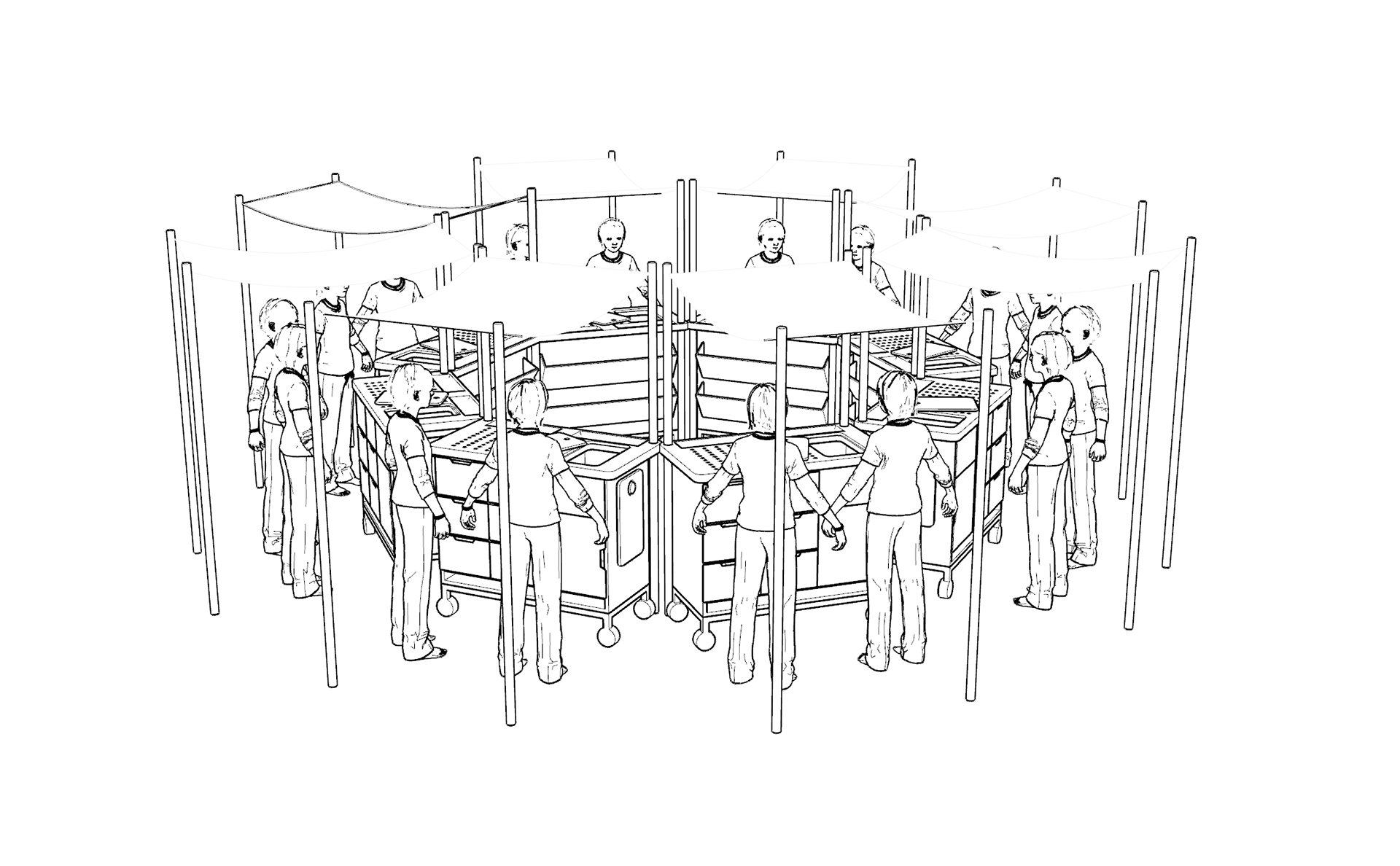
The STEAM Learning Pod in outdoor context classroom, circle configuration.
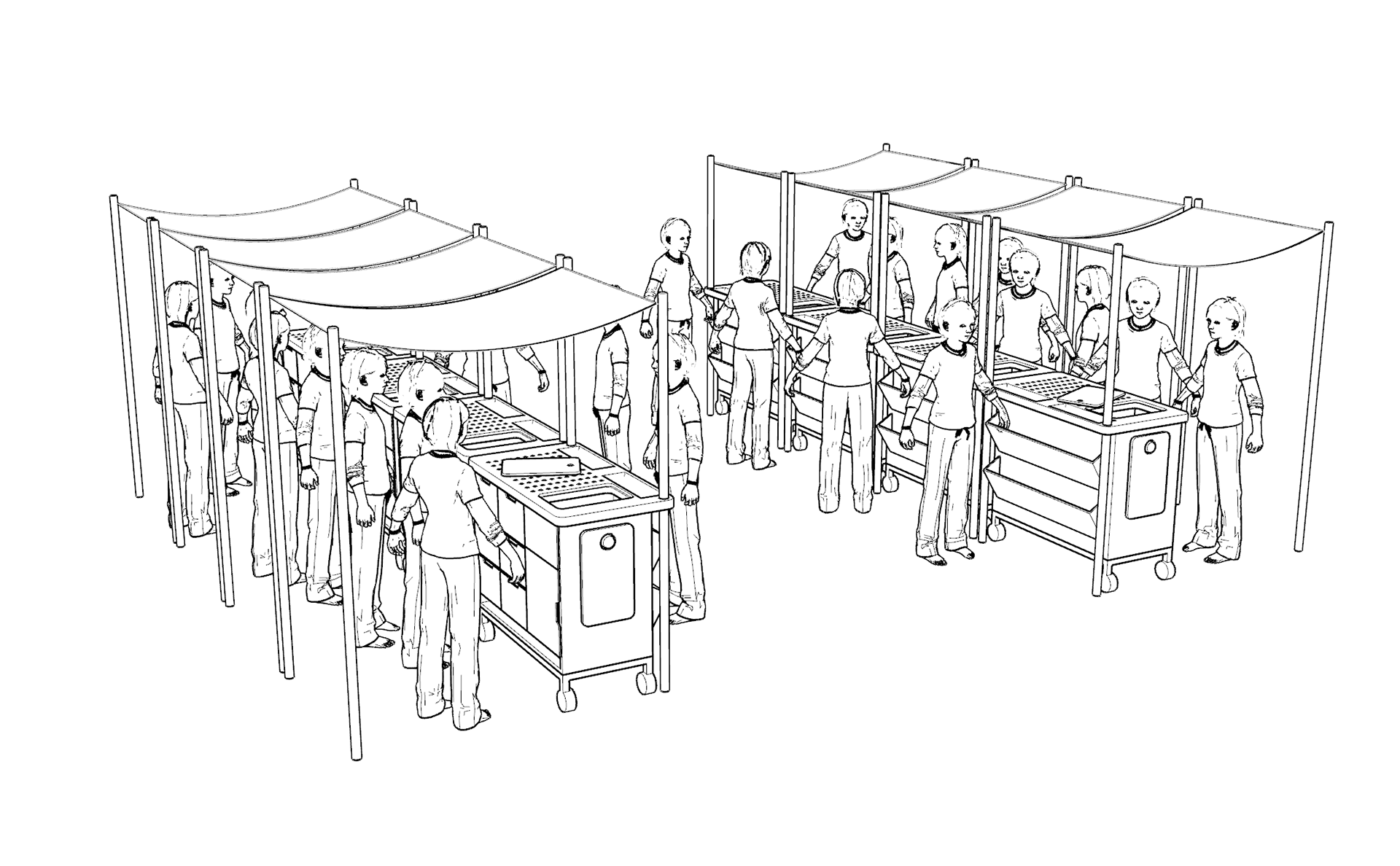
The STEAM Learning Pod in outdoor classroom context, market stall configuration.
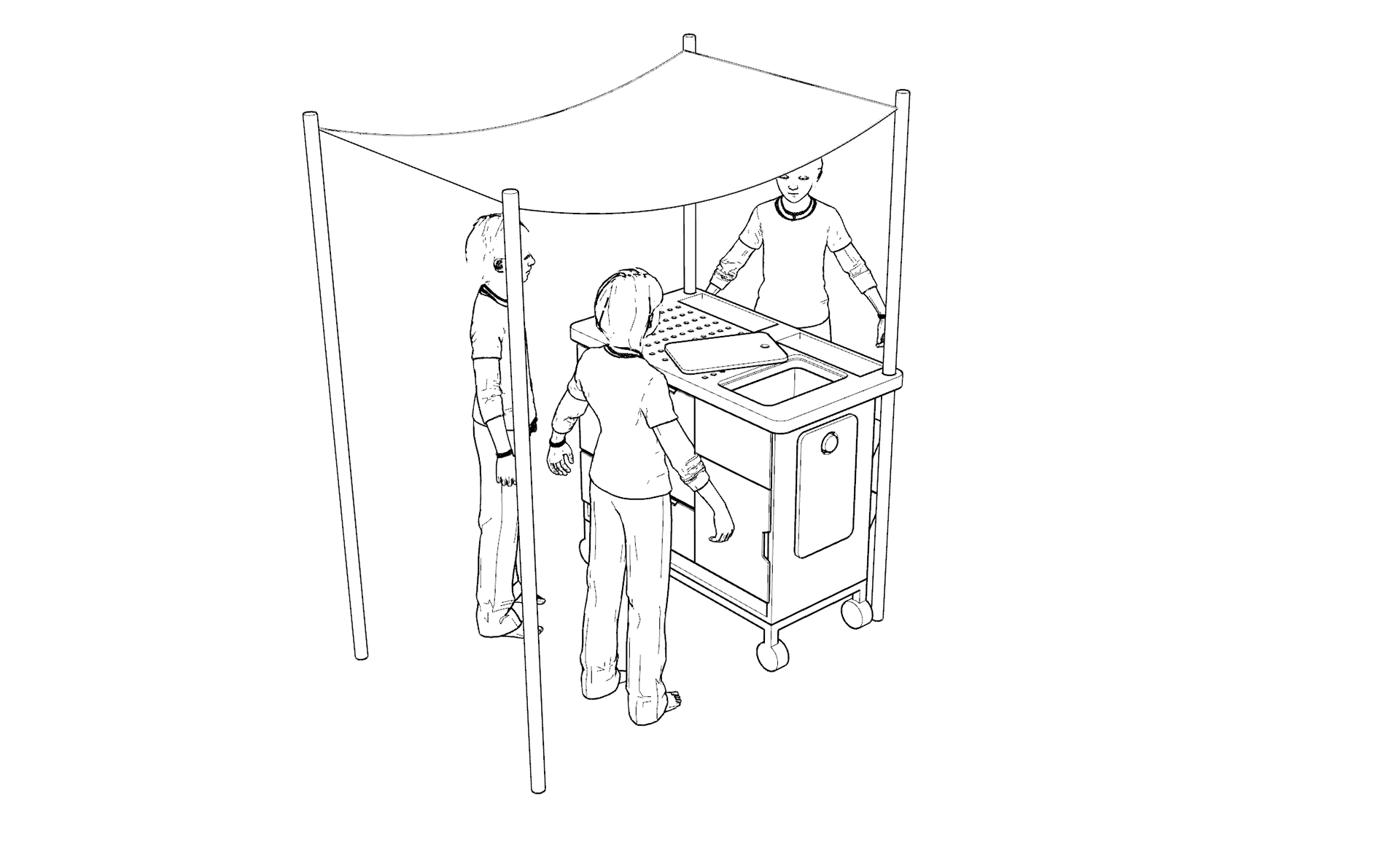
The STEAM Learning Pod, outdoor context.
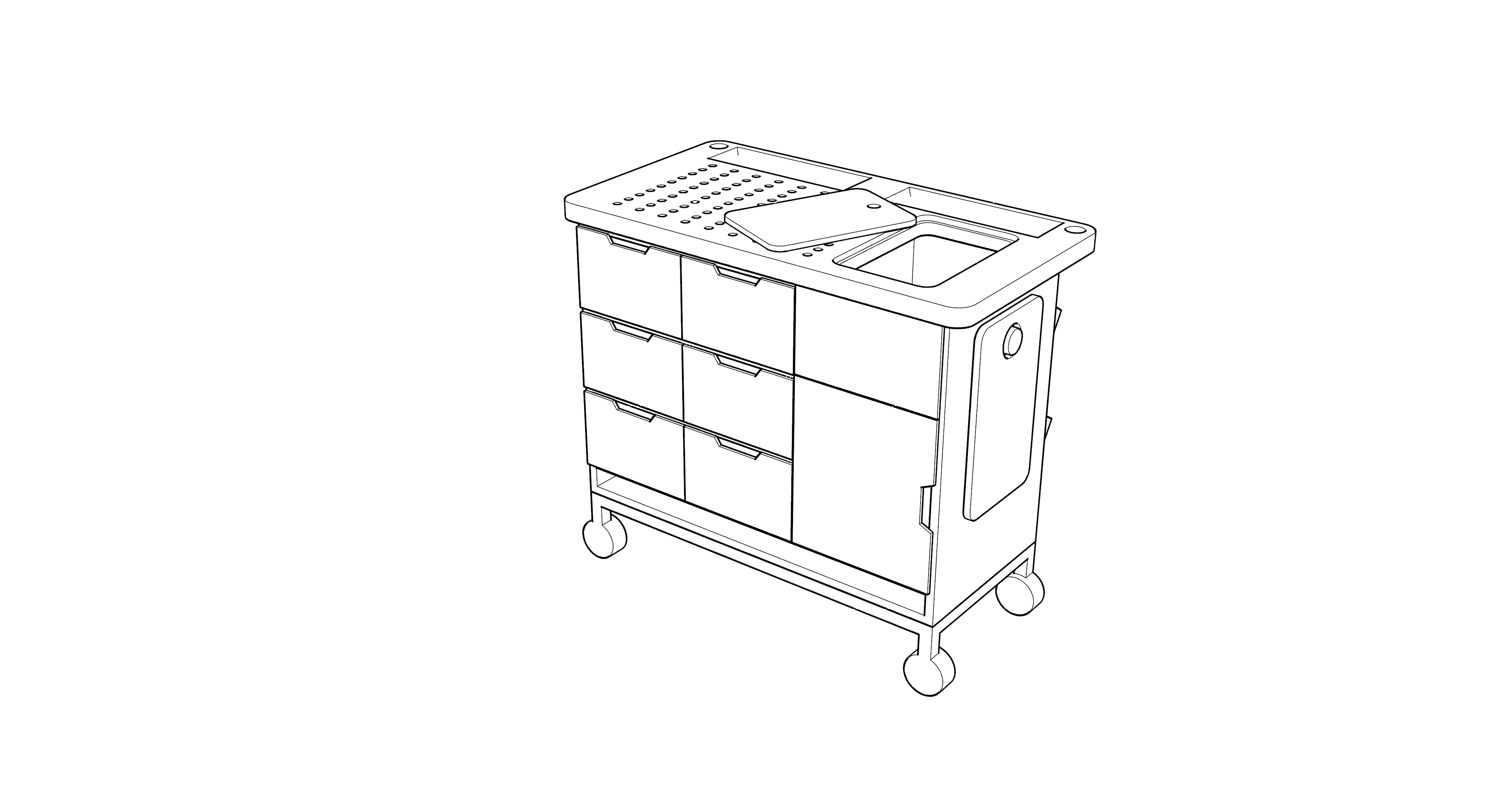
The STEAM Learning Pod.
To accompany the pod, several activities were designed and prototyped to support the curriculum and emphasise the importance of STEAM Learning. The STEAM Deck was individually designed and prototyped to support the group's pod solution. The deck of cards is designed to accompany each pod, or class of students, with each card holding a prompt within the five categories of STEAM (Science, Technology, Engineering, Arts, and Mathematics) as well as the topic of wellbeing or social collaboration. The activities included activities that could be completed individually or in small groups and also encouraged education through doing. The deck's future could be separated into further year level types, to further accommodate other curriculums as students move through school.
This solution may not have been the main solution to the project but was a contribution to supporting both the curriculum and social confidence of students as well as teaching material for staff in the classroom. They were designed for the pod, but could also be used independently of the pod.
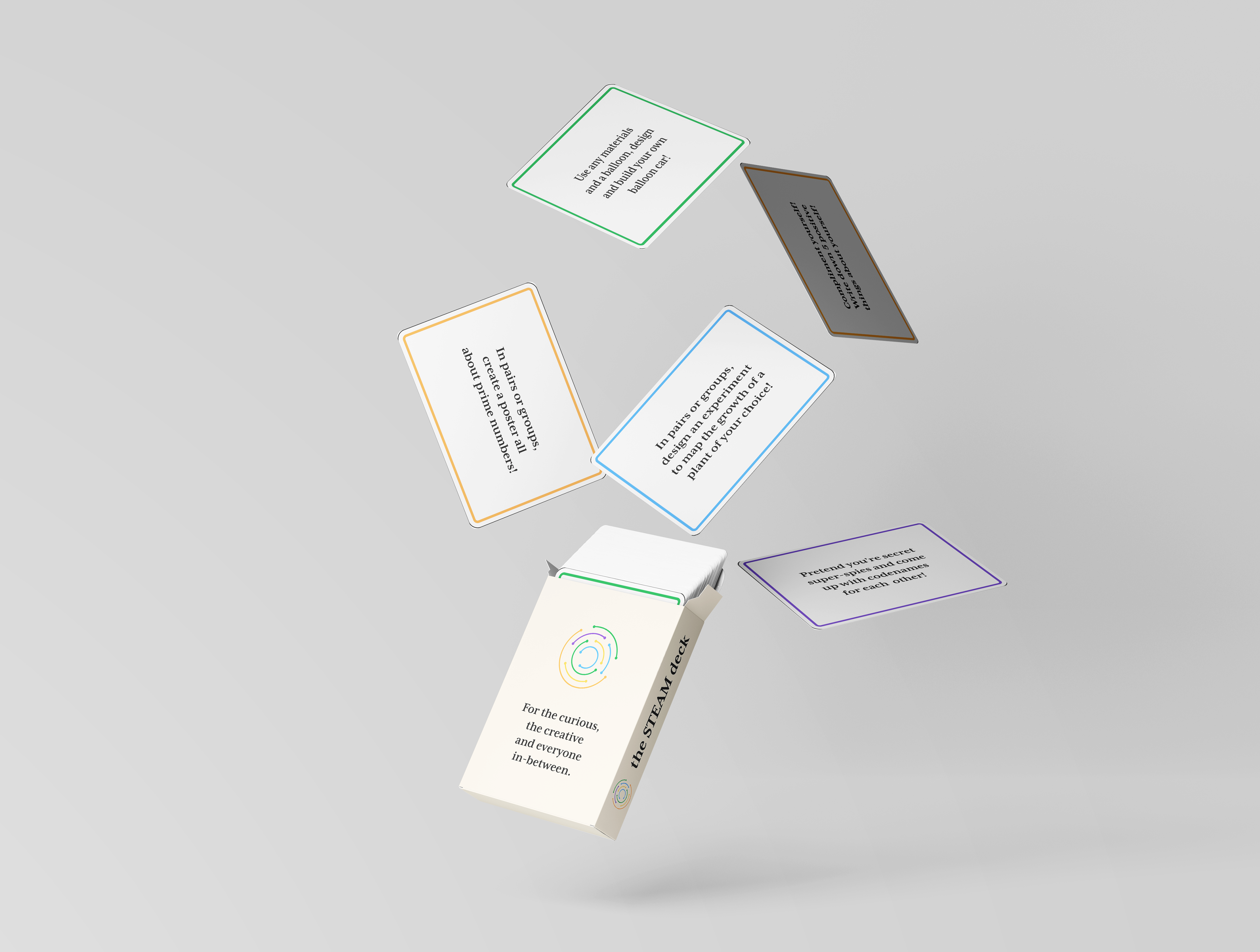
The STEAM Deck Mock-up. Spagnuolo, 2022.
The final report was contributed across the team, though the design of the layout was the main contribution here, as the content had been shared fairly equally before then. This report goes through each component of the STEAM Learning Pod project, using the Double Diamon framework as discussed earlier.